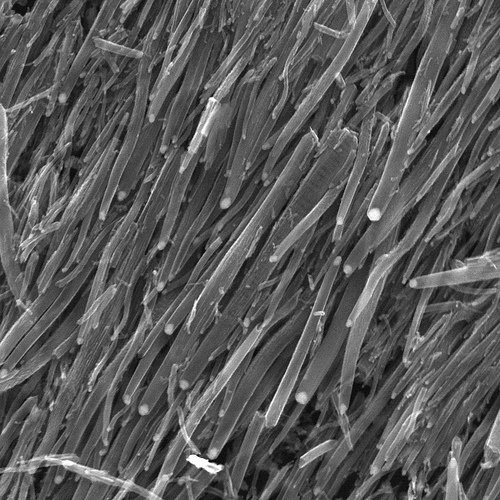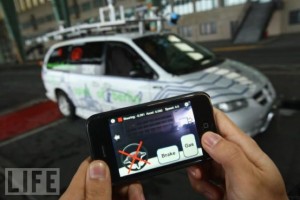Scientists at the Lawrence Livermore National Lab have succeeded in creating a novel transistor that could allow electronic devices to one day be hooked directly into the nervous system. The transistor derives its power from ATP – adenosine triphosphate, the molecular medium of energy exchange present in nearly all living cells – and does not require an external power source. The same energy that drives a living being can also power the transistor.
The transistor, which creator Aleksandr Noy calls the first integrated bioelectronic system, consists of a carbon nanotube stretched between two electrodes that is wrapped in an insulator at both ends but exposed in the middle. The transistor is then wrapped in a lipid bi-layer akin to those that surround the cells that make up our bodies. When the team applied voltage to the electrodes and poured a solution full of ATP and potassium and sodium ions over the transistor, current flowed from electrode to electrode.
The magic is in the lipid bi-layer, which contains an ATP-sensitive protein that serves as a kind of ion pump when ATP is present. The lipid hydrolyses ATP molecules, with each occurence causing three sodium ions to move one way through the lipid and two potassium ions to move the other way, netting one charge across the bi-layer to the nanotube.
This means the higher the ATP concentration, the stronger the current flows through the transistor. When the ATP concentration is reduced, ions move back through the membrane and the current is reduced. It all adds up to a way to use biological chemical energy to create electricity from the movement of ions in the body.
Noy claims that this is the first example of a truly integrated bioelectronic system. “I hope that this type of technology could be used to construct seamless bioelectronic interfaces to allow better communication between living organisms and machines.”
Itamar Willner at the Hebrew University of Jerusalem in Israel thinks the technology is full of promise. “The beauty of the system is reflected by the fact that mechanical energy at the nanoscale [from the movement of ions] is transformed into electricity.” He suggests it could be used to develop sensors to monitor intracellular metabolism.
Source: Popular Science, New Scientist.




